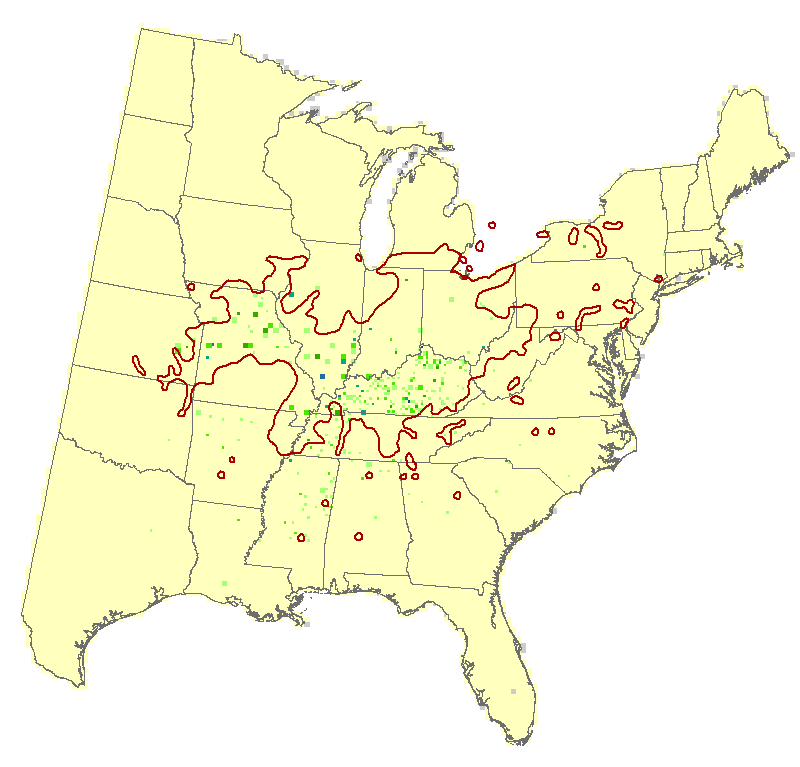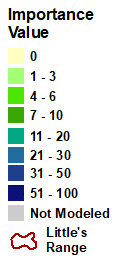shellbark hickory (Carya laciniosa)
Model Reliability: Low
| GCM SCENARIO | % Area Occ | Ave IV | Sum IV | Future/Current IV |
|---|---|---|---|---|
| Actual | 1 | 3.3 | 1009 | N/A |
| RFimp | 1.4 | 1.2 | 499 | 0.49 |
| CCSM45 | 2 | 0.9 | 509 | 1.02 |
| CCSM85 | 2.1 | 0.9 | 584 | 1.17 |
| GFDL45 | 2.8 | 0.9 | 781 | 1.56 |
| GFDL85 | 3.1 | 0.9 | 840 | 1.68 |
| HAD45 | 3.8 | 0.5 | 519 | 1.04 |
| HAD85 | 5.2 | 0.3 | 519 | 1.04 |
| GCM45 | 5 | 0.4 | 603 | 1.21 |
| GCM85 | 6.4 | 0.3 | 647 | 1.3 |
Regional Summary Tree Tables
Summaries for tree species are available for a variety of geographies, in both PDF and Excel format. These summaries are based on Version 4 of the Climate Change Tree Atlas
Interpretation Guide
Shellbark hickory is narrowly distributed (1.1% of area), sparse, low IV hickory with its core area in southern Missouri, Illinois, Indiana, Ohio, and all of Kentucky. Its low reliable model suggests a small decrease in suitable habitat (though still classed as 'No change'). Its low abundance and medium adaptability point to fair (4.5) to poor (8.5) overall capability to flourish under a changing climate. SHIFT has very minor effect on this species.
Family: Juglandaceae
Guild: persistent, large-seeded, advance growth dependent
Functional Lifeform: medium-large deciduous tree
| 3.7 | -0.48 |
| -0.30 |  |
MODFACs
What traits will impact shellbark hickory's ability to adapt to climate change, and in what way?:
Primary Positive Traits
Shade tolerance
Primary Negative Traits
Fire topkill Environment habitat specificity



